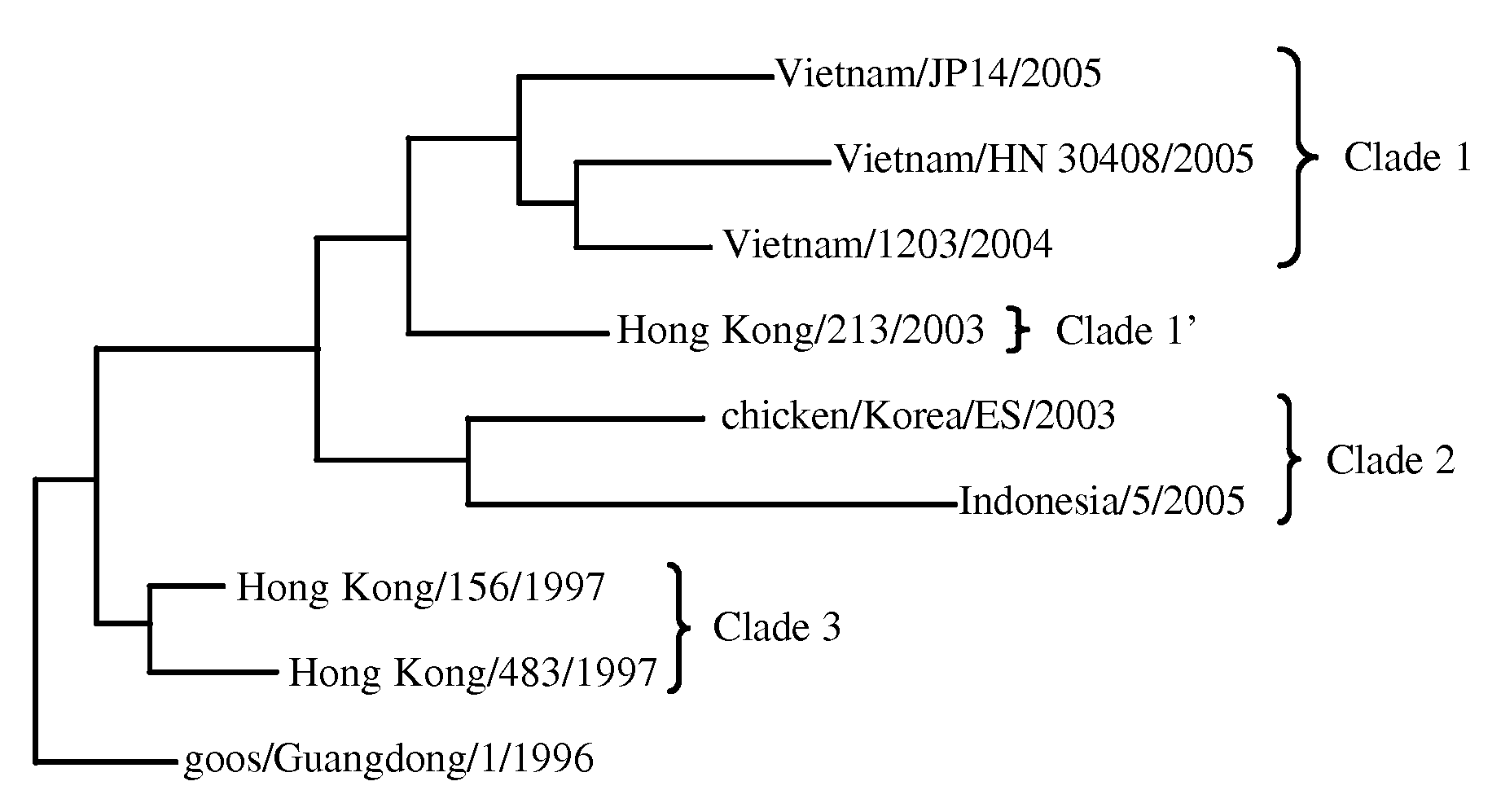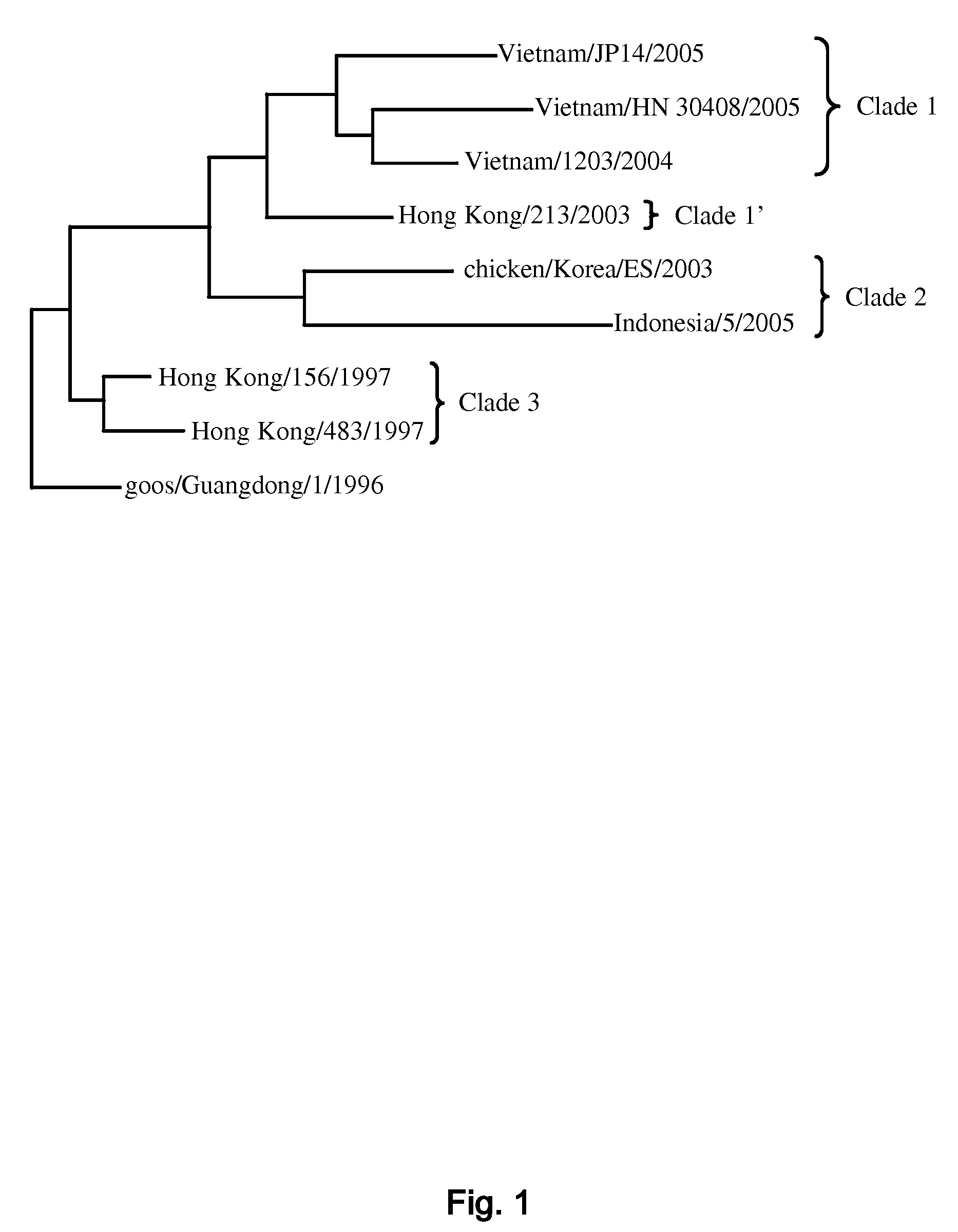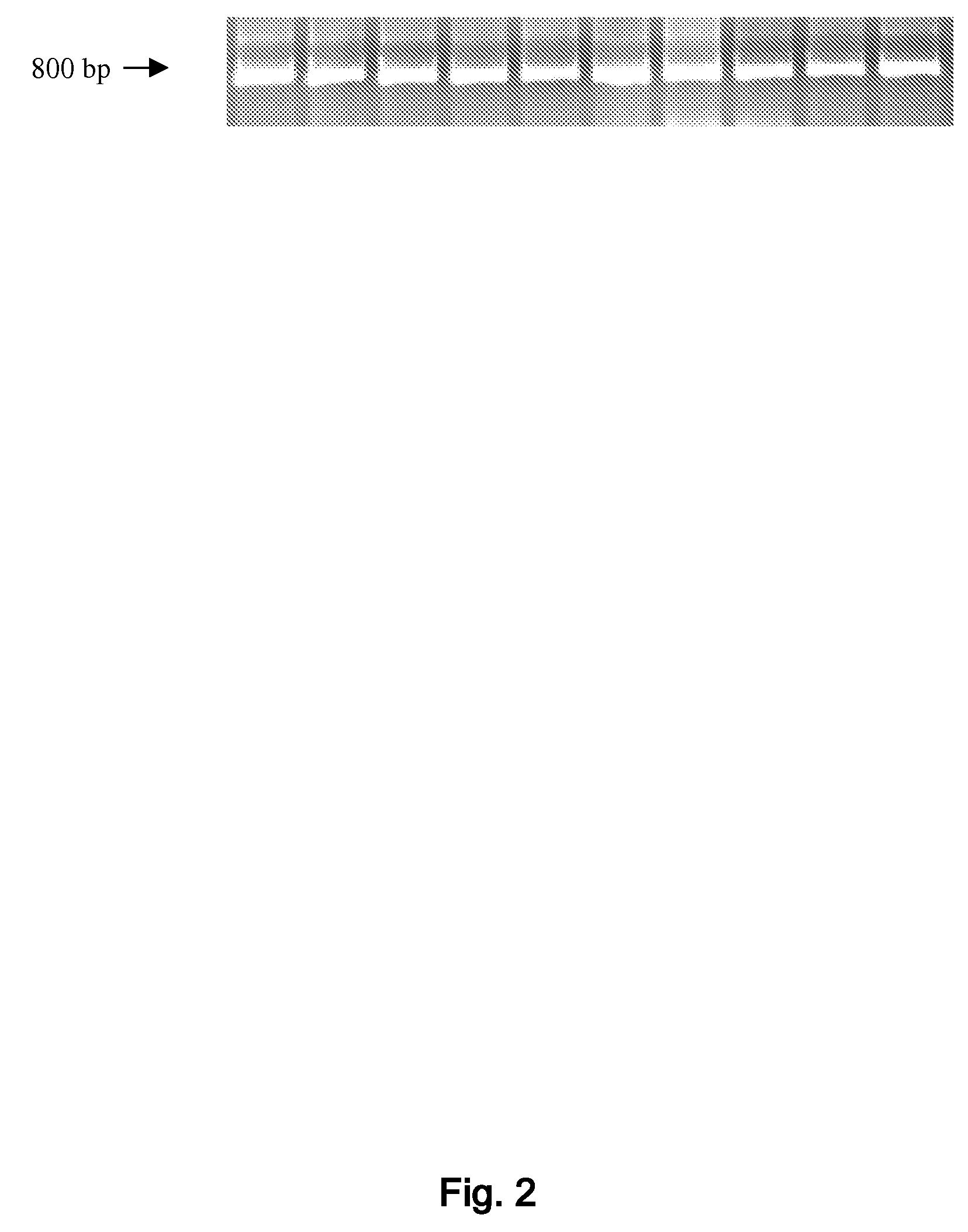Rapid, Informative Diagnostic Assay For Influenza Viruses Including H5N1
a technology of influenza viruses and diagnostic assays, applied in the field of nucleic acid diagnostics, can solve the problems of high fatality rate, many human infections, and increased concern about a potential pandemic, and achieve the effect of improving the accuracy and reproducibility of results
- Summary
- Abstract
- Description
- Claims
- Application Information
AI Technical Summary
Benefits of technology
Problems solved by technology
Method used
Image
Examples
Embodiment Construction
Overview
[0049]Described below is a method for identifying strains of an influenza virus, in particular H5N1, which in a preferred embodiment uses pyrosequencing technology to obtain characteristic short sequences of the virus. The method targets the hemagglutinin (HA) gene of H5N1 influenza. The assay uses RT-PCR to amplify a known H5N1-specific region of 768 nucleotides. Subsequent pyrosequencing (Ronaghi et al., 1998) of strains that are H5N1-positive with ten specific sequencing primers is used to determine HA clade and strain, receptor binding preference, low or high pathogenicity cleavage site and glycosylation status. The assay presented here is considerably more informative than traditional techniques, as it not only identifies the H5N1 lineage but also predicts receptor-binding properties that could herald the development of human-human transmissibility. Moreover, this assay is specific, rapid and cost-effective. Because specific regions of biological significance and differ...
PUM
| Property | Measurement | Unit |
|---|---|---|
| pH | aaaaa | aaaaa |
| pH | aaaaa | aaaaa |
| pH | aaaaa | aaaaa |
Abstract
Description
Claims
Application Information
 Login to View More
Login to View More - R&D
- Intellectual Property
- Life Sciences
- Materials
- Tech Scout
- Unparalleled Data Quality
- Higher Quality Content
- 60% Fewer Hallucinations
Browse by: Latest US Patents, China's latest patents, Technical Efficacy Thesaurus, Application Domain, Technology Topic, Popular Technical Reports.
© 2025 PatSnap. All rights reserved.Legal|Privacy policy|Modern Slavery Act Transparency Statement|Sitemap|About US| Contact US: help@patsnap.com



